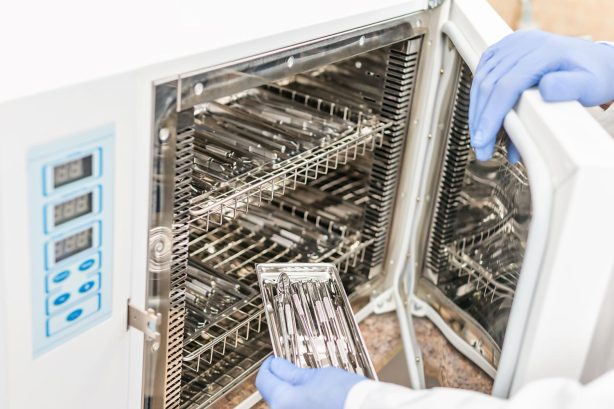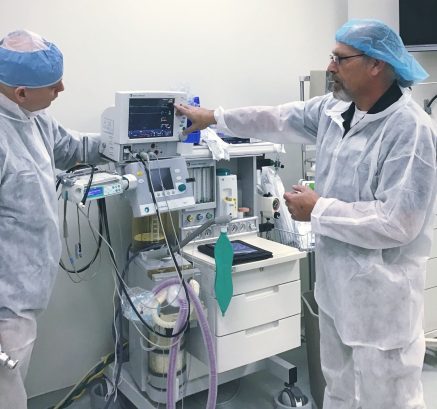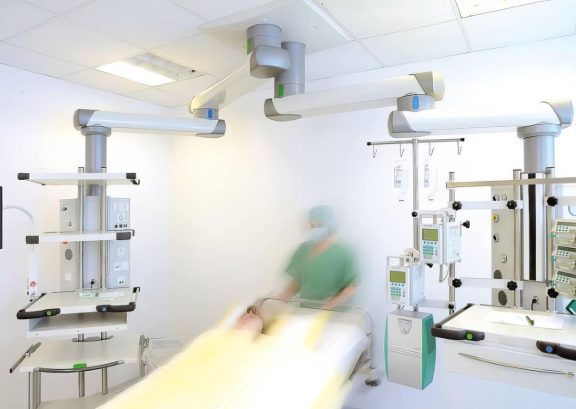The Importance of Biomedical Equipment in Health Care
Biomedical equipment plays a crucial role in the diagnosis, treatment, and management of various health conditions. It encompasses a broad range of devices and tools used by healthcare professionals to monitor vital signs, administer treatments, and perform surgical procedures. Without these tools, the quality of healthcare delivery would be significantly compromised.
Furthermore, biomedical equipment contributes to the safety and well-being of patients by providing accurate information that guides medical decisions. This technology helps healthcare professionals to detect diseases earlier when they are more treatable, reduces patient discomfort during procedures or surgeries, and improves recovery time. The use of biomedical equipment has revolutionized healthcare delivery by reducing mortality rates, increasing accuracy in diagnoses and treatment decisions while improving overall patient outcomes.
Electrosurgical equipment is an essential tool for surgeons in modern-day operating rooms. It is a type of surgical instrument that uses high-frequency electrical currents to cut, coagulate, and cauterize tissue during surgical procedures. Electrosurgical equipment has revolutionized surgical procedures by making them more efficient, precise, and safe for both patients and surgeons.
The use of electrosurgical equipment allows for much finer incisions than traditional surgical instruments, which means that there is less damage to surrounding tissues and blood loss during surgery is minimized. This translates into faster healing times for patients and shorter stays in the hospital. Additionally, electrosurgery reduces the risk of post-operative infections because it seals blood vessels as it cuts through tissue, preventing bacteria from entering the wounds.
One of the most important aspects of surgical procedures is to control bleeding during the operation. This task can be challenging, especially when working with small blood vessels or in complex surgeries. In such cases, an automatic tourniquet system is a must-have for efficient blood control.
Automatic tourniquet systems work by occluding arterial flow to a limb, which temporarily stops the flow of blood below the point of occlusion. This allows surgeons to operate without excessive bleeding and gives them more time to perform delicate procedures without worrying about excessive loss of blood. With advancements in technology, modern automatic tourniquet systems are now equipped with features such as precise pressure control and safety mechanisms that prevent over-pressure on tissues, ensuring maximum safety for patients.
The use of automatic tourniquets not only helps improve patient safety during surgical procedures but also reduces recovery time post-surgery. By minimizing blood loss and preserving vital organs’ oxygen supply, automatic tourniquet systems help speed up wound healing and reduce the risk of post-surgical complications.
Scope Towers: Streamlining Endoscopic Procedures for Better Results
Endoscopic procedures are vital in diagnosing and treating various medical conditions, from digestive tract disorders to lung disease. The use of scope towers in these procedures has revolutionized the way health care professionals approach endoscopy. Scope towers offer a comprehensive and efficient solution for endoscopic procedures, allowing health care professionals to deliver better results.
A scope tower is a multi-functional platform that houses endoscopes, video processors, light sources, monitors, and other necessary equipment required for endoscopic surgeries. The tower is designed to streamline the surgical process by providing easy access to all necessary tools needed during surgery. Furthermore, it reduces the need for multiple staff members as it simplifies the surgical setup.
The result of using scope towers is an efficient surgical process with fewer errors and improved accuracy during surgical procedures. This leads to better patient outcomes and quicker recovery times. In short, scope towers help doctors provide high-quality care while improving their workflow efficiency.
The use of cameras and camera consoles in medical procedures has revolutionized the way surgeries are performed and diagnoses are made. These pieces of biomedical equipment provide clear, precise images of anatomical structures, allowing health care professionals to perform surgical procedures with greater accuracy and minimal invasiveness. Furthermore, they enable doctors to see inside the human body without necessarily having to make incisions or perform exploratory surgery. The result is a higher degree of precision in patient care.
Cameras and camera consoles have proven particularly useful in minimally invasive surgeries such as laparoscopic procedures. In these surgeries, a small camera is inserted through a small incision into the body cavity or organ being studied. This allows surgeons to view the area on a monitor while performing surgery with specialized instruments. Cameras also enable pathologists to examine tissues for diagnosis purposes during biopsies. Ultimately, this technology not only benefits patients but healthcare providers as well by making their jobs easier and more efficient.
The use of light source and video processor has transformed medical diagnostics, particularly imaging, in ways that were previously unimaginable. The equipment is designed to produce high-quality images and videos for accurate diagnosis of various conditions. The devices have replaced traditional methods that were slow and lacked precision, making it easier for medical professionals to detect illnesses before they worsen. They have also improved the safety of patients by eliminating the need for invasive diagnostic procedures.
Light sources provide bright illumination necessary for endoscopic imaging, which allows the visualization of internal organs without the need for invasive surgery. Video processors, on the other hand, process real-time images from various sources such as endoscopes or microscopes to produce clear visuals that aid in diagnosis. This equipment has a significant impact on patient outcomes by enabling early detection and treatment of diseases while minimizing unnecessary surgical interventions.
Insufflation and Suction-Irrigation: Enhancing Surgical Visualization and Efficiency
Insufflation, the introduction of gas into the body cavity, is a critical aspect of laparoscopic procedures, enabling surgeons to gain access to internal organs without making large incisions. Suction-irrigation, on the other hand, allows surgeons to remove fluids and debris from the surgical site while irrigating it with a sterile solution. This process can be automated or manual depending on the nature of the procedure.
With these two technologies working in tandem, surgical visualization is drastically improved as excess fluids are removed allowing for better visibility. Additionally, insufflation allows surgeons to maintain constant pressure within the body cavity making it easier for them to navigate through tissue with greater accuracy and control. Furthermore, suction-irrigation enhances efficiency by reducing time required for cleaning and drying of instruments during surgery.
Overall, these technologies have revolutionized minimally invasive surgeries allowing for shorter operation times with fewer complications. Enhanced visualization leads to fewer errors and less trauma for patients resulting in faster recovery times. The use of insufflation and suction-irrigation has made a significant impact on healthcare delivery by improving outcomes through better visualization and increased efficiency during surgery.
Scopes: The Vital Tool for Non-invasive Diagnostic Procedures
The use of scopes is an essential component of non-invasive diagnostic procedures. Scopes are specialized instruments that enable healthcare professionals to visualize internal organs or body cavities without making incisions or using invasive procedures.
There are various types of scopes, including endoscopes, bronchoscopes, and colonoscopes. Each type of scope has a specific purpose and is designed to visualize different areas of the body. For example, an endoscope can be used to examine the inside of the ear, nose, throat, or digestive system while a bronchoscope helps respiratory physicians examine the lungs.
The use of scopes has revolutionized diagnostic procedures by allowing healthcare professionals to identify medical conditions without surgery. With sophisticated technology like high-resolution cameras and fiber-optic illumination systems, doctors can get close-up views of organs or tissues in real-time for a more accurate diagnosis. Also, non-invasive procedures minimize risks associated with traditional surgical approaches such as bleeding, infection and scarring.
Preventive maintenance is a crucial aspect of ensuring that biomedical equipment functions efficiently. Regular checkup and maintenance can help healthcare professionals detect problems with biomedical equipment before they become severe, thus avoiding costly repairs or replacements.
Preventive maintenance typically involves tasks such as checking for physical damage, cleaning equipment, lubricating parts, testing for functionality and safety verification. A well-maintained piece of biomedical equipment results in improved accuracy, reduced downtimes, less waste and increased efficiency.
By ensuring optimal functioning through preventive maintenance, healthcare professionals can avoid issues that may lead to incorrect diagnoses or possibly even harm patients. When it comes to the health care industry—where the stakes are high—the benefits of regular preventive maintenance are simply too significant to ignore.
If you’re in need of biomedical equipment maintenance or repair, look no further than Auxo Medical. With years of experience and a team of skilled professionals, Auxo Medical has established itself as a reliable and trustworthy provider of biomedical services. Whether you need preventative maintenance or urgent repairs, the experts at Auxo Medical have the experience, training and resources to get the job done quickly and effectively. Don’t let equipment downtime impact your operations – contact Auxo Medical today to schedule your maintenance or repair service.
Auxo Medical: Equipping Hospital and Surgery Centers with High-Quality, Reliable Biomedical Equipment
Auxo Medical is a leading provider of biomedical equipment to hospitals and surgery centers. We have been in the industry for over two decades, earning a reputation for delivering quality products that meet the unique needs of healthcare professionals. Our available biomed equipment includes everything from electrosurgical equipment to scopes, ensuring that healthcare providers have everything they need to deliver top-notch care to their patients.
What sets Auxo Medical apart is our commitment to providing high-quality and reliable equipment, maintenance and repair. We understand the critical role medical equipment play in patient care and safety. As such, we only offer products from trusted manufacturers who meet rigorous quality standards. This means that customers can feel confident in their purchases knowing that they are getting top-quality biomedical equipment. If you are looking for trusted and reliable biomedical equipment for your hospital or surgery center, look no further than Auxo Medical. View our online medical equipment catalogue of over 1100 products or contact us today for a customized quote. Fill out our contact form online or call us toll free at (888) 728-8448.


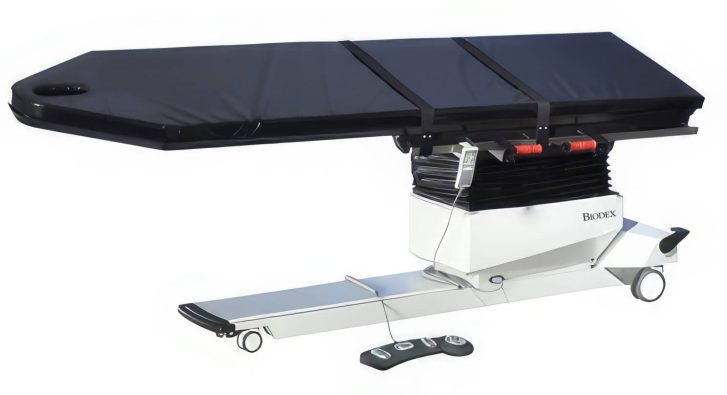
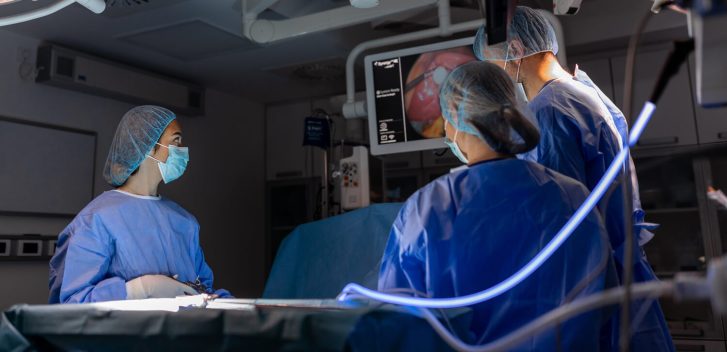
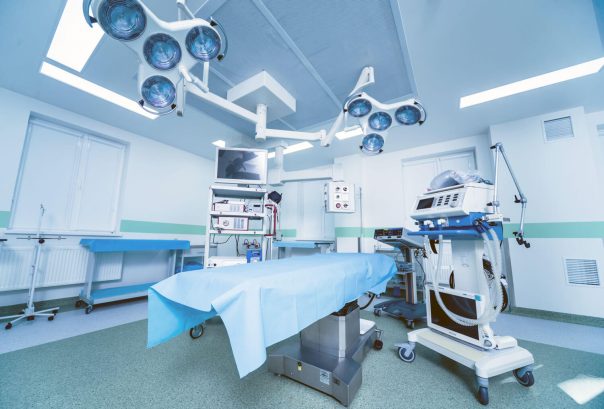
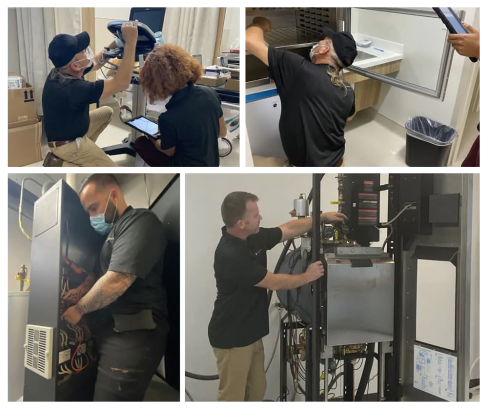
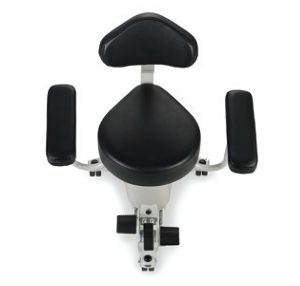 Surgeon seating is an important aspect of any operating room. Surgeons need to be comfortable while performing surgeries that can take hours to complete. The right surgeon seating can improve their posture and reduce the risk of musculoskeletal disorders. It can also help to reduce fatigue, which is crucial during lengthy surgical procedures. Surgeon seating can be customized to meet the specific needs of the surgeon, including adjustable height, tilt, and lumbar support. It should also be easy to clean and disinfect to maintain a sterile operating environment. In summary, proper surgeon seating plays a critical role in ensuring successful surgical outcomes and the well-being of the surgical team.
Surgeon seating is an important aspect of any operating room. Surgeons need to be comfortable while performing surgeries that can take hours to complete. The right surgeon seating can improve their posture and reduce the risk of musculoskeletal disorders. It can also help to reduce fatigue, which is crucial during lengthy surgical procedures. Surgeon seating can be customized to meet the specific needs of the surgeon, including adjustable height, tilt, and lumbar support. It should also be easy to clean and disinfect to maintain a sterile operating environment. In summary, proper surgeon seating plays a critical role in ensuring successful surgical outcomes and the well-being of the surgical team.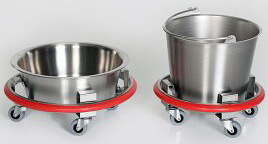 The use of kick buckets in operating rooms has been an age-old practice. These buckets are used to collect surgical waste such as used sponges, drapes, and gloves. Kick buckets are made of stainless steel, which makes them easy to clean and disinfect. The buckets are also portable, allowing them to be moved around the operating room as needed. While some hospitals have moved towards using disposable waste containers, kick buckets remain a reliable and cost-effective option for many medical facilities. Proper disposal of surgical waste is essential for maintaining a sterile environment in the operating room, and kick buckets continue to play an important role in this process.
The use of kick buckets in operating rooms has been an age-old practice. These buckets are used to collect surgical waste such as used sponges, drapes, and gloves. Kick buckets are made of stainless steel, which makes them easy to clean and disinfect. The buckets are also portable, allowing them to be moved around the operating room as needed. While some hospitals have moved towards using disposable waste containers, kick buckets remain a reliable and cost-effective option for many medical facilities. Proper disposal of surgical waste is essential for maintaining a sterile environment in the operating room, and kick buckets continue to play an important role in this process.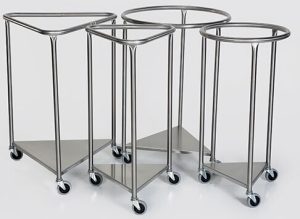 Surgical linen hampers in healthcare facilities provide for the proper disposal of contaminated linens, gowns, and scrubs. These hampers are designed with durability, mobility, and ease of use in mind. The hampers can be made from various materials, including plastic, stainless steel, and canvas. They also come in different sizes to accommodate different loads of linens. The hampers are strategically placed in different areas of the healthcare facility, such as operating rooms, patient rooms, and laundry areas, to ensure that contaminated linens are properly disposed of to prevent the spread of infections. The use of surgical linen hampers is crucial in maintaining a clean and hygienic environment in any healthcare setting.
Surgical linen hampers in healthcare facilities provide for the proper disposal of contaminated linens, gowns, and scrubs. These hampers are designed with durability, mobility, and ease of use in mind. The hampers can be made from various materials, including plastic, stainless steel, and canvas. They also come in different sizes to accommodate different loads of linens. The hampers are strategically placed in different areas of the healthcare facility, such as operating rooms, patient rooms, and laundry areas, to ensure that contaminated linens are properly disposed of to prevent the spread of infections. The use of surgical linen hampers is crucial in maintaining a clean and hygienic environment in any healthcare setting.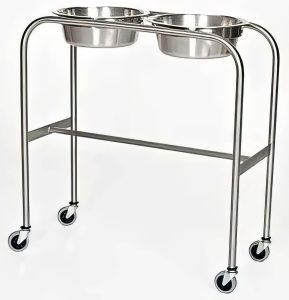
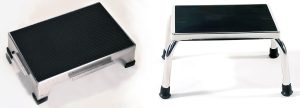 Operating room step stools are essential pieces of equipment used in surgical procedures. These stools are designed to provide additional height for surgeons and other medical personnel to reach surgical instruments and equipment safely. They are made from high-quality materials such as stainless steel, aluminum, and plastic. The stools are adjustable, making it easy for surgeons to customize their height to suit their individual needs. They are easy to clean and sanitize, ensuring that the operating room remains sterile and free from contamination. Operating room step stools come in different sizes and designs, and they are a vital tool in ensuring successful surgeries.
Operating room step stools are essential pieces of equipment used in surgical procedures. These stools are designed to provide additional height for surgeons and other medical personnel to reach surgical instruments and equipment safely. They are made from high-quality materials such as stainless steel, aluminum, and plastic. The stools are adjustable, making it easy for surgeons to customize their height to suit their individual needs. They are easy to clean and sanitize, ensuring that the operating room remains sterile and free from contamination. Operating room step stools come in different sizes and designs, and they are a vital tool in ensuring successful surgeries.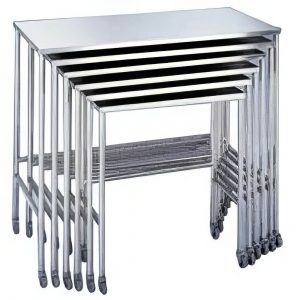 Surgical instrument tables are an integral part of any operating room. These tables are designed to provide a stable and sterile surface for surgical instruments. They are typically made of stainless steel and feature a smooth surface that is easy to clean. Surgical instrument tables come in a variety of shapes and sizes to accommodate the different needs of medical professionals. Some tables are designed for general use, while others are specialized for specific surgical procedures. Overall, surgical instrument tables are essential for ensuring a safe and successful surgical procedure.
Surgical instrument tables are an integral part of any operating room. These tables are designed to provide a stable and sterile surface for surgical instruments. They are typically made of stainless steel and feature a smooth surface that is easy to clean. Surgical instrument tables come in a variety of shapes and sizes to accommodate the different needs of medical professionals. Some tables are designed for general use, while others are specialized for specific surgical procedures. Overall, surgical instrument tables are essential for ensuring a safe and successful surgical procedure.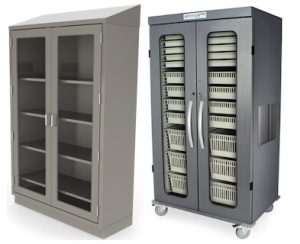 Medical cabinets are essential storage units in healthcare facilities, where medical supplies and equipment need to be organized and kept within easy reach. Fixed and
Medical cabinets are essential storage units in healthcare facilities, where medical supplies and equipment need to be organized and kept within easy reach. Fixed and 